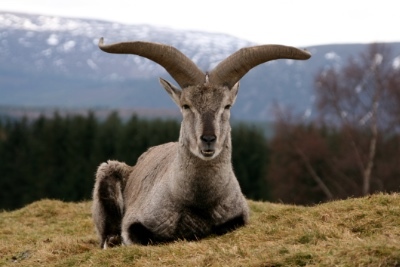
A new study, led by Briana Abrahms of the University of Washington in Seattle, USA has found that climate change is increasing the number of times that humans and wildlife are coming into conflict.
The study, published in Nature Climate Change cited examples 49 of climate-driven conflicts occurring among all wildlife groups, on every continent except Antarctica and in all five oceans. Examples of human-wildlife conflicts included:-
Warming in the Arctic is leading to delayed freeze-up of sea ice, leading to polar bears spending more time on land and seeking new food sources in areas inhabited by humans. Conflicts involving damage to property, life-threatening encounters and bear killings have tripled in the last thirty years.
 In Nepal, warming and decreased snowfall at high altitudes have caused bharal (Himalayan blue sheep, right) to forage at lower altitudes. Snow leopards, which prey on bharal, have followed them. This has led to increased incidences of bharal foraging on crops and livestock being killed by snow leopards. In return, more snow leopards have been killed by farmers in retaliation for the loss of their livestock.
In Nepal, warming and decreased snowfall at high altitudes have caused bharal (Himalayan blue sheep, right) to forage at lower altitudes. Snow leopards, which prey on bharal, have followed them. This has led to increased incidences of bharal foraging on crops and livestock being killed by snow leopards. In return, more snow leopards have been killed by farmers in retaliation for the loss of their livestock.
In South Africa, a strong El Nino led to high air and surface temperatures, which caused white sharks to move closer to the shore at a time during which more people were spending more time in the water, leading to a 360% increase in shark bites.
Meanwhile, a marine heatwave in the Eastern Pacific Ocean meant that humpback and blue whales moved closer inshore, delaying the opening of fisheries in the area. This event brought about a 400% increase in incidents involving whales becoming entangled in fishing gear, leading to injury and death of whales and the closure of some fisheries.
 Drought in Tanzania drove elephants (right) to move closer to villages in search of food and water. The elephants destroyed crops, leading people to kill elephants in retaliation.
Drought in Tanzania drove elephants (right) to move closer to villages in search of food and water. The elephants destroyed crops, leading people to kill elephants in retaliation.
The study makes it clear that in future, "recognising the connection between climate change and human-wildlife conflict is essential of anticipating and ultimately addressing new and intensified human-wildlife interations in the 21st century and beyond."
Images
Bharal by Jonathan Perry | Dreamstime.com
Snow leopard by Viacheslav Nemyrivskyi | Dreamstime.com
African elephants by Mariusz Prusaczyk | Dreamstime.com
